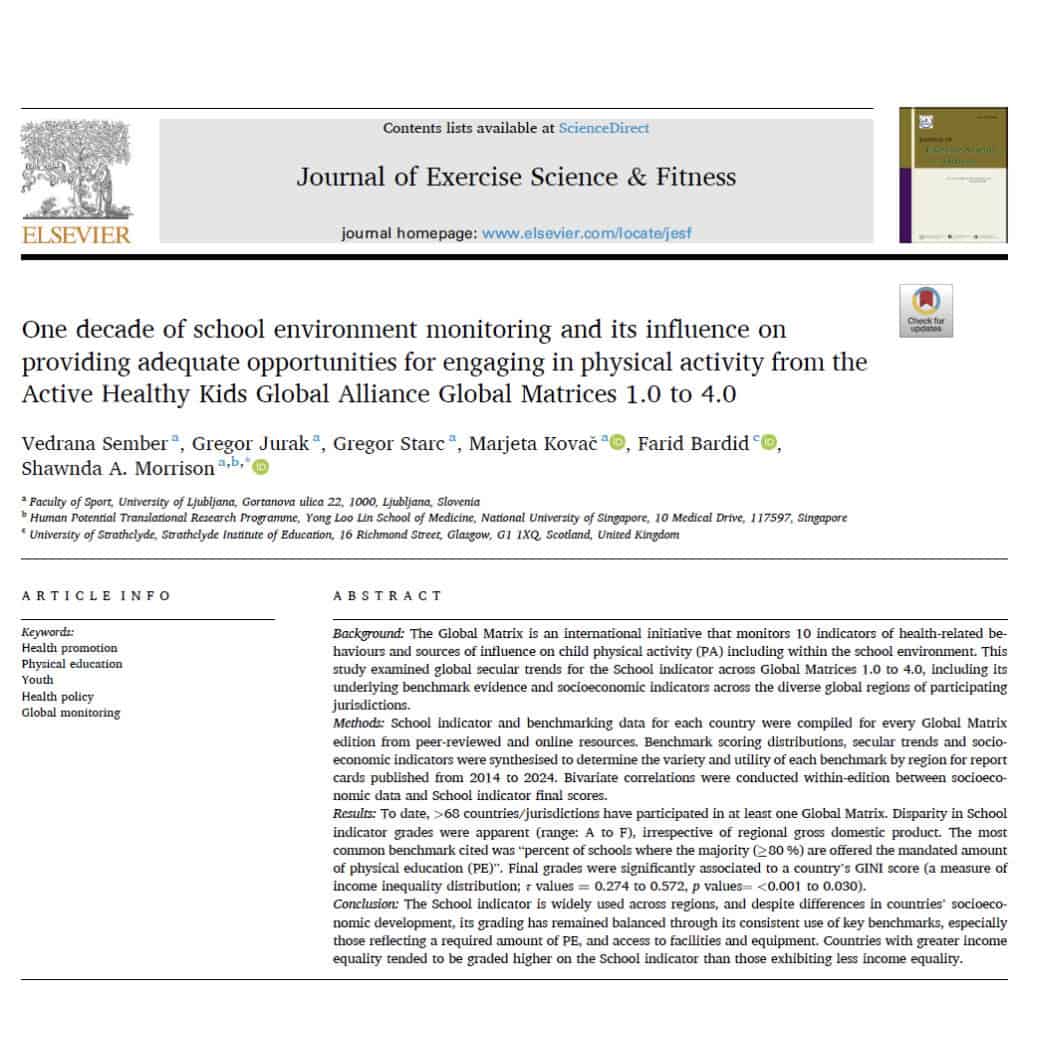
27 Oct One decade of school environment monitoring and its influence on providing adequate opportunities for engaging in physical activity from the Active Healthy Kids Global Alliance Global Matrices 1.0 to 4.0
Congratulations to Dr. Shawnda A. Morrison and colleagues on their recent publication, “One decade of school environment monitoring and its influence on providing adequate opportunities for engaging in physical activity from the Active Healthy Kids Global Alliance Global Matrices 1.0 to 4.0” recently published in the Journal of Exercise Science & Fitness! The abstract and citation are listed below.
Abstract
The Global Matrix is an international initiative that monitors 10 indicators of health-related behaviours and sources of influence on child physical activity (PA) including within the school environment. This study examined global secular trends for the School indicator across Global Matrices 1.0 to 4.0, including its underlying benchmark evidence and socioeconomic indicators across the diverse global regions of participating jurisdiction. School indicator and benchmarking data for each country were compiled for every Global Matrix edition from peer-reviewed and online resources. Benchmark scoring distributions, secular trends and socioeconomic indicators were synthesised to determine the variety and utility of each benchmark by region for report cards published from 2014 to 2024. Bivariate correlations were conducted within-edition between socioeconomic data and School indicator final scores. To date, >68 countries/jurisdictions have participated in at least one Global Matrix. Disparity in School indicator grades were apparent (range: A to F), irrespective of regional gross domestic product. The most common benchmark cited was “percent of schools where the majority (≥80 %) are offered the mandated amount of physical education (PE)”. Final grades were significantly associated to a country’s GINI score (a measure of income inequality distribution; τ values = 0.274 to 0.572, p values= <0.001 to 0.030). The School indicator is widely used across regions, and despite differences in countries’ socioeconomic development, its grading has remained balanced through its consistent use of key benchmarks, especially those reflecting a required amount of PE, and access to facilities and equipment. Countries with greater income equality tended to be graded higher on the School indicator than those exhibiting less income equality.
Citation
Vedrana Sember, Gregor Jurak, Gregor Starc, et al. 2025. “One decade of school environment monitoring and its influence on providing adequate opportunities for engaging in physical activity from the Active Healthy Kids Global Alliance Global Matrices 1.0 to 4.0.” Journal of Exercise Science & Fitness, Volume 23, Issue 4, 2025, Pages 480-486, https://doi.org/10.1016/j.jesf.2025.10.007.
Read the article here.


